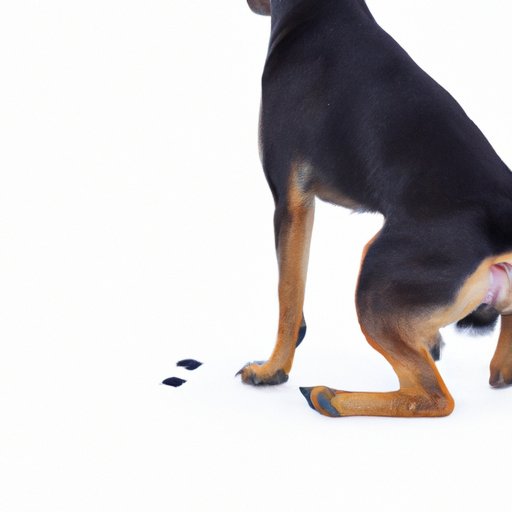Introduction
As a pet owner, it is important to be able to identify early signs of pregnancy in your dog. This can help you provide the necessary care and support for your canine during a critical time in their life. In this article, we will discuss the various indications that your dog may be pregnant, how to recognize the symptoms, and the importance of veterinary care throughout the pregnancy.
Signs Your Dog Might be Pregnant: A Guide for Pet Owners
Early signs of canine pregnancy can be subtle and difficult to detect. However, changes in behavior and appetite can often be indicative of a pregnancy. For example, your dog may become more affectionate or clingy, and may start to seek out more attention or physical contact than usual. Additionally, you may notice that your dog is eating more than usual or has a decreased appetite.
Another way to monitor for physical signs of pregnancy is to keep an eye out for weight gain or nipple changes. As the pregnancy progresses, your dog’s nipples may become enlarged or darkened, and she may start to gain weight and appear “round” in her midsection.
How to Detect Early Signs of Pregnancy in Your Dog
There are several methods available for detecting pregnancy in dogs, including blood tests and ultrasound. Blood tests can detect the presence of a hormone called relaxin, which is produced during pregnancy, while an ultrasound can visualize the developing fetuses in the womb.
It is important to note that each detection method has its own benefits and limitations. For example, while blood tests are relatively quick and non-invasive, they may not be accurate until several weeks after conception. Ultrasounds, on the other hand, can provide more definitive results but may be more expensive and require a skilled veterinary professional to perform.
What to Look for When You Suspect Your Dog is Pregnant
If you suspect your dog may be pregnant, there are several symptoms and indicators to keep an eye out for. These include:
- A decrease in appetite or change in eating habits
- Increased lethargy or fatigue
- Enlarged or darkened nipples
- An overall “thickening” or roundness of the midsection
- Behavioral changes, such as clinginess or increased attention-seeking
- A milky discharge from the nipples (which can occur later in the pregnancy)
It is also important to be aware of red flags that may indicate a false pregnancy or other health issues, such as vaginal discharge or prolonged lack of appetite.
Pregnancy Diagnosis in Dogs: How to Know if Your Canine is Expecting
Diagnosing a pregnancy in dogs requires a professional veterinary assessment. This typically involves a physical exam, blood test, or ultrasound to determine the presence and number of fetuses.
It is important to seek veterinary care early on in the pregnancy to ensure the health and safety of both the mother and her developing puppies. Your veterinarian can also provide guidance and support throughout the pregnancy and delivery process.
A Step-By-Step Guide to Recognizing the Symptoms of Canine Pregnancy
To accurately identify a pregnancy in your dog, there are several steps you can take:
- Monitor changes in appetite and behavior
- Observe any physical changes, such as weight gain or nipple changes
- Consult with your veterinarian about the most appropriate detection method
- Follow up with regular veterinary care throughout the pregnancy
Visual aids, such as diagrams or photos, can also be helpful in recognizing the symptoms of canine pregnancy.
The Top Indications that Your Dog is Pregnant and What You Should Do Next
The top indications that your dog may be pregnant include changes in behavior and appetite, weight gain, and nipple changes. If you suspect that your dog is pregnant, it is important to seek veterinary care as soon as possible.
During the pregnancy, it is important to provide your dog with a healthy and balanced diet, regular exercise, and appropriate prenatal care, such as vaccinations and deworming. Additionally, you may need to make changes to your home or living space to accommodate the impending arrival of puppies.
Conclusion
Identifying early signs of pregnancy in your dog is an important part of responsible pet ownership. By monitoring for changes in behavior and physical symptoms, consulting with your veterinarian, and providing appropriate care throughout the pregnancy, you can ensure the health and safety of both the mother and her developing puppies.
If you suspect that your dog may be pregnant, seek veterinary care early on to determine the presence and number of fetuses and ensure proper care throughout the pregnancy and delivery process.
To stay informed and educated on canine health and wellness, be sure to consult with your veterinarian and continue to research and learn about your dog’s specific needs and behaviors.
